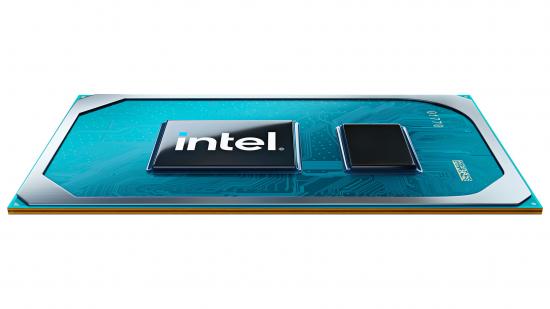Intel has launched its 11th Gen Tiger Lake mobile CPUs, packing all-new technology and promising meaningful gains over the previous generation. The star of the show is the accompanying Intel Iris Xe GPU, bringing 1080p gaming to the thinnest of laptops through integrated graphics.
Tiger Lake is comprised of nine new processors, each boasting better battery life for smaller machines, allowing you to game for longer. Despite still being 10nm chips, these are Intel’s first release based on its 10nm SuperFin process and Willow Cove architecture, promising quicker connectivity, enhanced AI acceleration, and better hardware optimisation.
With so much new technology, it’s clear to see why Intel bills its 11th Gen mobile CPUs as the “best for thin-and-light” laptops, but not all of them are built equal. Intel currently has two versions of its Iris Xe GPU, with Core i7 processors sporting more powerful integrated graphics at 96 EUs than the i5 equivalent at just 80 EUs. Both stand above i3 models, though, which have been relegated to using Intel UHD Graphics instead.
The top-tier Iris Xe GPU blew competition out of the water during Intel’s demo against a system with an AMD Ryzen 7 4800U, consistently hitting close to 60 frames per second in showcased titles like Gears Tactics. The caveat here is that these tests used games that are optimised for Intel rather than general titles, and we still don’t know how much of a difference there is between Xe GPUs.
We do know that Tiger Lake’s mettle was put to the test during its public debut at CES 2020 using Destiny 2, however, and there are talks of playable frame rates for other popular games, which is no small feat for integrated graphics solutions.
| Model | Cores/Threads | Graphics | Graphics (EUs) | Watts | Base Frequency (GHz) | Single Core Turbo (GHz) | All Core Turbo (GHz) | Cache |
| Core i7-1185G7 | 4/8 | Intel Iris Xe | 96 | 12-28W | 3.0 | 4.8 | 4.3 | 12MB |
| Core i7-1165G7 | 4/8 | Intel Iris Xe | 96 | 12-28W | 2.8 | 4.7 | 4.1 | 12MB |
| Core i5-1135G7 | 4/8 | Intel Iris Xe | 80 | 12-28W | 2.4 | 4.2 | 3.8 | 8MB |
| Core i3-1125G4 | 4/8 | Intel UHD Graphics | 48 | 12-28W | 2.0 | 3.7 | 3.3 | 8MB |
| Core i3-1115G4 | 2/4 | Intel UHD Graphics | 48 | 12-28W | 3.0 | 4.1 | 4.1 | 6MB |
| Core i7-1160G7 | 4/8 | Intel Iris Xe | 96 | 7-15W | 1.2 | 4.4 | 3.6 | 12MB |
| Core i5-1130G7 | 4/8 | Intel Iris Xe | 80 | 7-15W | 1.1 | 4.0 | 3.4 | 8MB |
| Core i3-1120G4 | 4/8 | Intel UHD Graphics | 48 | 7-15W | 1.1 | 3.5 | 3.0 | 8MB |
| Core i3-1110G4 | 2/4 | Intel UHD Graphics | 48 | 7-15W | 1.8 | 3.9 | 3.9 | 6MB |
While base and boost clock numbers are impressive, reaching as high as 3.0GHz and 4.8GHz respectively, Intel has simplified the process even further for those not as well-versed in specifications. Introducing the new Intel Evo brand, consumers simply need to look out for the new badge to guarantee quality.
Intel Evo is said to guarantee support for Thunderbolt 4 and Wi-Fi 6, and offer consistent responsiveness on battery with nine or more hours of charge on Full HD displays. Batteries can even be juiced up with fast charging, supposedly accumulating four hours’ worth in just 30 minutes. And for those that leave their laptop on sleep, it should wake up in just one second.
We will begin seeing 150 Tiger Lake-designed laptops trickle into the market over the next few months from partners like Acer, ASUS, Dell, HP, MSI, Razer, Samsung, and more. At least 20 of these designs should carry the Evo certification badge.
Head over to the website if you want to know more details about Intel’s latest.
